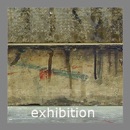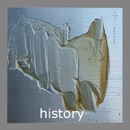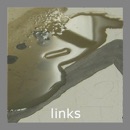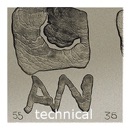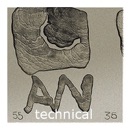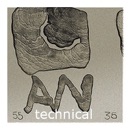
UNDERSTANDING LITHOGRAPHY
Of all the processes of printmaking, lithography is probably the most difficult to understand and is regarded by many to be the hardest to learn, to control and master. The literal meaning of lithography is stone writing. Deriving from the Greek lithos for stone and graphos for drawing, the term is used to describe that process of printing from stone, first discovered in 1798 in Bavaria by Alois Senefelder (1771 -1834). During the first decade of lithography however, the process was also known variously as chemical printing, steindruckery and in England, as polyautography.
Lithography is a form of planographic printing, which means that unlike relief printing or intaglio, a totally flat surface is used for drawing and for printing. For stone lithography, a very special type of finely grained limestone, sometimes known as fossil stone is used. Sourced from the Solnhofen quarry near Munich, the stone is first cut into uniform blocks, levelled and grained to achieve a finely polished smooth surface. Stones vary in size and thickness and are available in a range of colour and hardness from relatively soft yellow to relatively hard grey. Other materials have also been used successfully as printing elements including marble and for plate lithography, grained zinc and aluminium, paper, wood and most recently, polyester.
Lithography is also sometimes referred to as chemical printing, since the principle upon which lithography is based, is dependent upon the mutual repulsion of grease and water and the formation of diametrically opposed surfaces on the stone, which enable the image drawn to be subsequently inked and printed.
Drawings are normally made using a variety of greasy drawing materials. Composed of tallow or petroleum grease, beeswax, shellac, soap and lamp black; these include crayons or chalks, rubbing crayon and liquid drawing ink known as tusche. Once complete the drawing is then processed such that during printing, providing that the stone is kept damp with water, greasy ink will adhere only to the greasy drawing whilst water present in negative areas will repel grease and will remain ink free.
An understanding of the principle of lithography can be difficult but may be facilitated by comparison of lithography with other printmaking techniques. For instance in both relief printing and in intaglio, the image to be printed is formed by physical manipulation of a surface, such that in linocut all those areas not to print are cut away; whilst in intaglio the drawing is scored, cut or etched into the surface of the metal plate. As a planographic process however, in lithography where the drawing is made on the totally flat surface of the stone, selective inking and printing of the image is only possible following chemical manipulation. This chemical manipulation or processing, also known confusingly as etching is completed using nitric acid and Gum Arabic mixed together in varying proportions as etches.
During etching two simultaneous chemical reactions occur on the stone. Being hydrophilic Gum Arabic causes the negative areas of the image to become water-attracting and hence grease and ink repellent. Meanwhile acid in the etches causes saponification and the formation of soap (oleo manganate of lime) within the structure of the stone and directly beneath the original drawing. Being oleophilic it is this substance representing a complete copy of the drawn image that actually attracts ink during printing. As a consequence two quite distinct and opposing surfaces are formed on the stone, one which will attract water and will repel ink; the other being diametrically opposed will attract ink and will repel water.
During printing it is most important therefore that the stone is kept damp by using a sponge to distribute an even film of water over the entire surface. Providing that the moisture on the surface of the stone is maintained it is then possible to ink the image using a roller charged with lithographic printing ink. If however the surface of the stone dries out, ink will then be deposited over the entire surface and it will become very dark, causing the image to fill in and the inevitable loss of the entire drawing.
Once fully inked, printing occurs when the stone together with the paper is run through the press under extreme pressure causing the inked image to transfer from stone to the paper placed on top. When printed on a direct press, the resulting printed image always appears as a mirror image of the original; only when an offset press is used will the image be printed in the same orientation as that drawn on the stone.
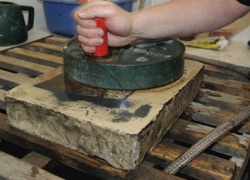
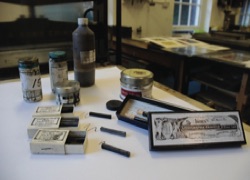
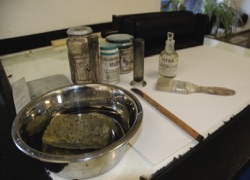
Stone graining using a levigator and carborundum grit 80, 100, 180, 220
Drawing materials includng crayons, pencils, rubbing crayon, tusche wash, toner, and encre zincographique
Etching materials, Gum Arabic, nitric acid, rosin, talc, sponge, brush and bowl of water
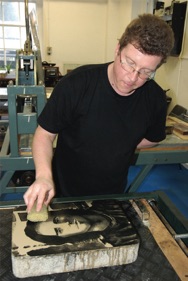
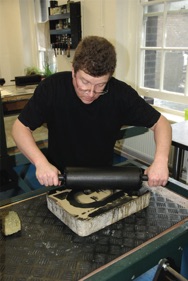
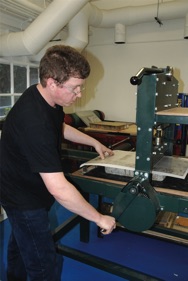
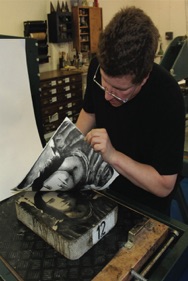
Sponging the stone for inking
Rolling up in black ink
Running through the press
Pulling the proof
